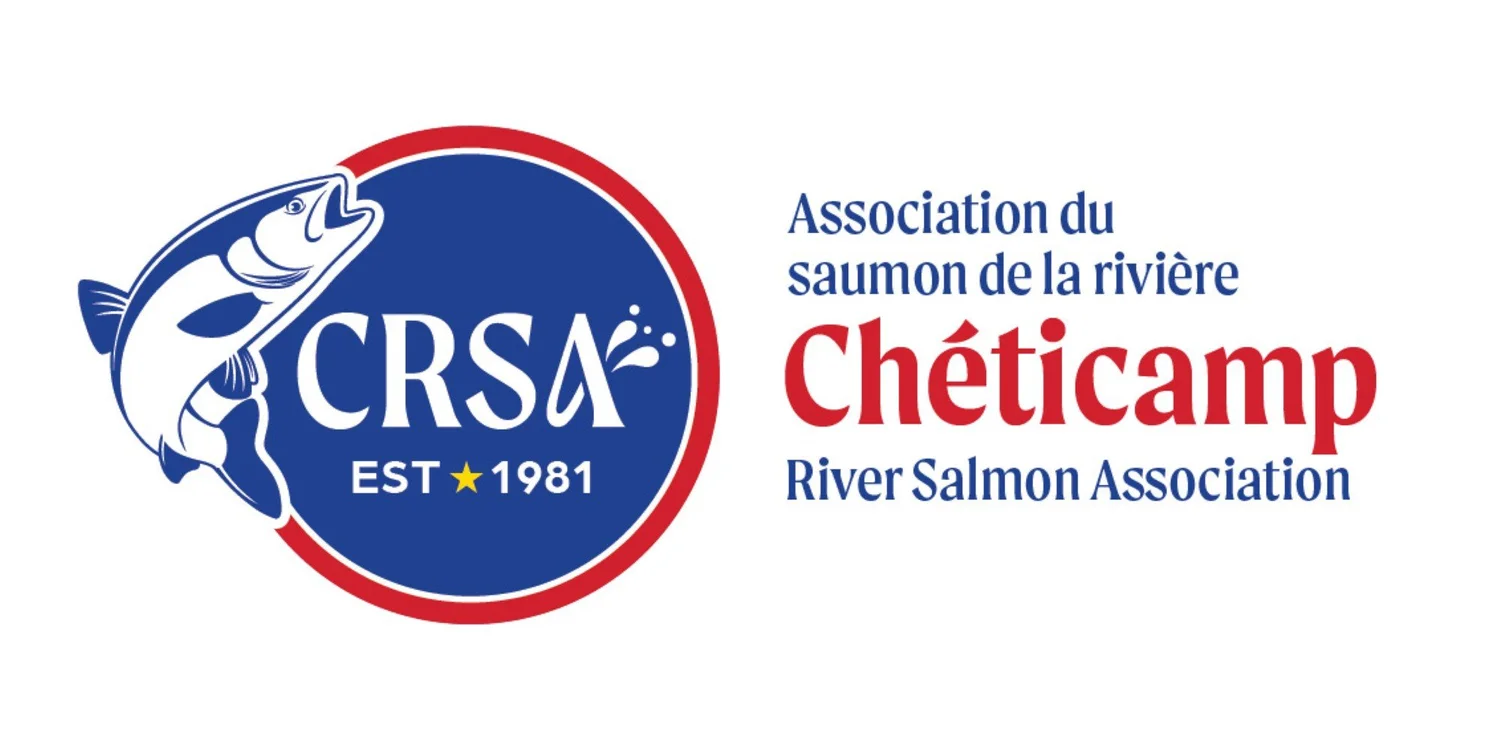Trying our hand at counting redds on the Cheticamp River
The Cheticamp River Salmon Association has been interested in adding redd counts to our regular monitoring activities for years, and after hosting a training/practice session yesterday here in Cheticamp we are definitely one step closer to this goal.
Participants in yesterday’s redd count making their way up the Cheticamp River. Photo credit: Jimmie Pedersen.
The CRSA had Charles MacInnis (Habitat consultant and former DFO habitat coordinator) join us yesterday to lead the session held at Cape Breton Highlands National Park (CBHNP). Given that Charles is both familiar with the Cheticamp River (Charles was the lead consultant on the 5-year restoration project undertaken by the CRSA and CBHNP on the lower Cheticamp River) and has years of experience conducting redd counts, we seemed to be the perfect fit for leading the training/practice session.
Charles pointing out a large salmon redd to Jillian and Archie. Photo credit: Jimmie Pedersen.
And he didn’t disappoint. Charles shared his knowledge of where to look for redds and how to identify them, explained the protocol he follows when organizing and conducting a count, and also discussed some of the reasons to conduct a redd count (including to gather information on spatial and temporal distribution of spawning and help evaluate the effectiveness of habitat restoration projects). While the inclass portion of the day was informative, undoubtedly most participants in yesterday’s session would agree that the learning that took place and the experience gained in the river were the most valuable.
Charles sharing info with the group. Photo credit: Jimmie Pedersen.
In addition to Charles, another eight people participated in the practice redd count and training session: Rene Aucoin (President, CRSA), Jillian Baker (Project Manager, CRSA), Jimmie Pedersen (Director, CRSA - as well as popular fishing guide and photographer), Archie Doucette and Angie Rickets (Enivronmental impact assessment, CBHNP), Sarah Penney and Jenna MacEachern (Atlantic Salmon Recovery Project, CBHNP), and Keith Christmas (Unama’ki Institute of Natural Resources).
Group shot of participants in the training/practice redd count (from left to right): Archie Doucette, Sarah Penney, Jillian Baker, Angie Ricketts, Keith Christmas, Jenna MacEachern, Charles MacInnis, and Rene Aucoin. Photo credit: Jimmie Pedersen.
Charles and the group covered an approximately one kilometer section of the Cheticamp River during the field portion of the training (spanning above and below the Faribault Brook tributary). Despite the weather not being as nice as originally forecasted (it ended up being overcast and cool instead of warm and sunny), Charles was able to help the group find redds belonging to the different salmonids in the Cheticamp River (Atlantic salmon, brown trout, and brook trout). In addition to learning how to distinguish between the different redds (it turns out that this is something that will take a lot of pratice and experience to feel confident with), participants also got to pratice laying out a sample reach (section of river to be surveyed) and filling in data sheets with information on the redds located. The group ended up being able to identify and record information on a total of 25 redds during the pratice count.
Sarah helping to measure a 100m section of the river to survey. Photo credit: Jimmie Pedersen.
Given that yesterday’s training/practice count was held relatively early on in the spawning season, the CRSA hopes to follow-up with at least two more redd counts on the Cheticamp River. Stay tuned for results on these future counts!
Rene and Jillian taking a look at some of the data collected during the practice count. Photo credit: Jimmie Pedersen.
The CRSA is able to extend its season and continue with data collection thanks to the generous funding and support from its many partners, funders, and volunteers, including the Atlantic Canada Opportunities Agency (ACOA), the Nova Scotia Salmon Association’s NSLC Adopt-a-Stream Program, the Atlantic Salmon Conservation Foundation, Cape Breton Highlands National Park, Sage Environmental Program, Dalhousie University, the Atlantic Water Network, and the Atlantic Salmon Federation.









